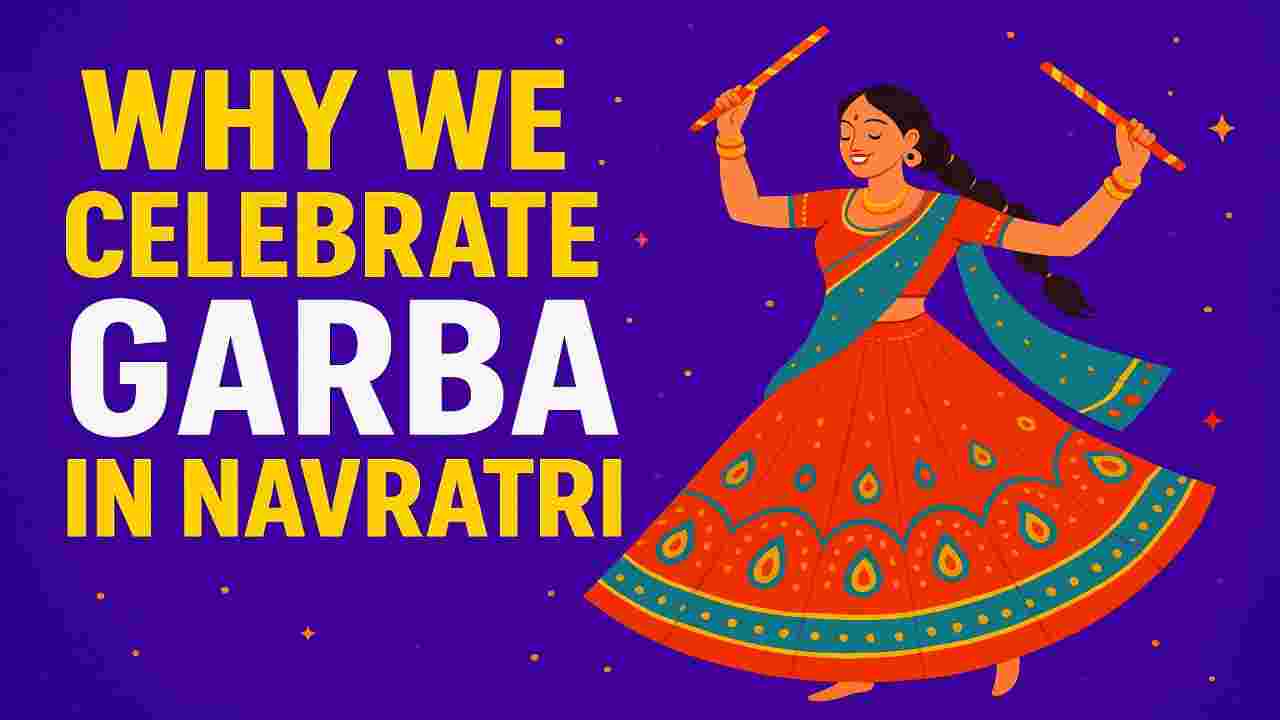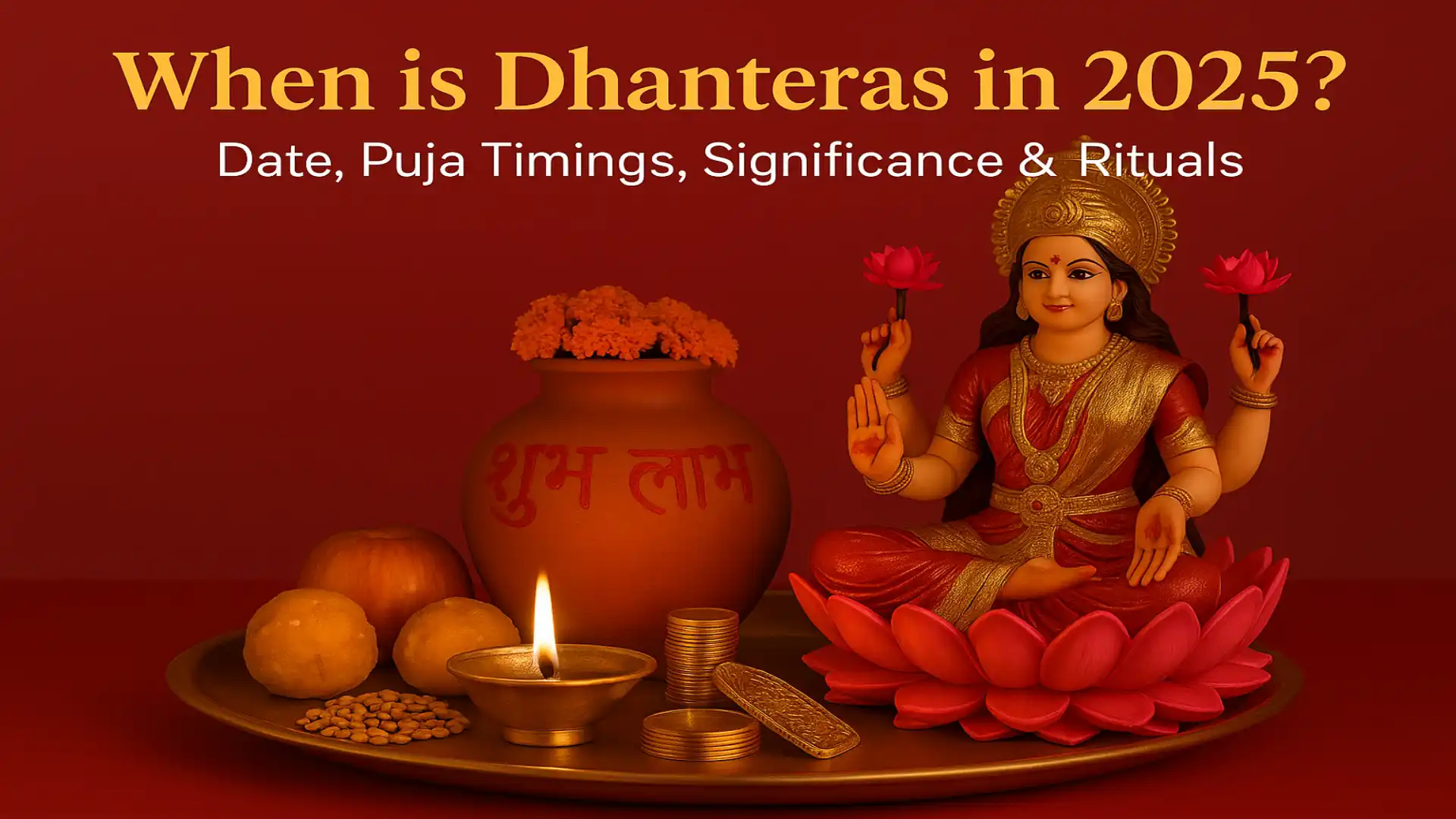
Have you ever wondered why we celebrate Garba in Navratri, as millions of people across India gather every year to dance in colorful circles, clad in vibrant attire? The answer lies in centuries-old traditions that intertwine devotion, culture, and community spirit. One of the most iconic aspects of Navratri is Garba—a lively and devotional dance that celebrates the divine feminine energy.
In this blog, we’ll explore why we celebrate Garba in Navratri, the significance behind the dance, the traditional Garba dress, popular Garba songs, and how this vibrant practice has evolved into a cultural phenomenon.
What Is Garba?
Garba is a traditional folk dance originating from Gujarat, India, and is performed during the nine nights of Navratri, a festival dedicated to Goddess Durga and her various manifestations. The word “Garba” is derived from the Sanskrit word Garbha, meaning “womb,” symbolizing fertility, life, and divine creation.
Traditionally, Garba is performed in a circle around an image or idol of the goddess, representing the cycle of life and the centrality of divine energy. Dancers clap their hands, twirl gracefully, and move rhythmically to the beats of traditional drums like the dhol, creating a mesmerizing display of devotion and energy.
The Significance of Garba in Navratri
So, why we celebrate Garba in Navratri goes far beyond just dancing in groups. The dance carries deep spiritual and cultural meanings:
- Worship of Goddess Durga
Navratri is dedicated to the nine forms of Goddess Durga, each representing a different aspect of feminine power, strength, and virtue. Performing Garba is a way to honor the goddess and seek her blessings for health, prosperity, and protection. The circular movements of the dance symbolize the eternal cycle of life and the divine power that sustains it. - Celebration of Life and Fertility
The word Garba itself, meaning womb, emphasizes creation and life. Dancing around a lamp or idol of the goddess signifies respect for life and fertility, reinforcing the belief that divine energy flows through every living being. - Community Bonding
Garba brings people together regardless of age or social status. Communities gather in open grounds, courtyards, or temples, fostering social cohesion, unity, and shared joy. It is a reminder that devotion can be expressed collectively, strengthening cultural identity. - Spiritual Elevation through Dance
In Hindu philosophy, dance is considered a form of meditation and spiritual expression. The rhythmic steps, synchronized claps, and devotion-filled movements of Garba allow participants to lose themselves in the music, creating a connection with the divine and cleansing the mind and soul.
The Evolution of Garba Dance
Over the centuries, Garba dance has evolved from a purely devotional ritual to a vibrant cultural celebration:
- Traditional Garba: Initially, Garba was performed around a clay lamp called the Garbha Deep, symbolizing the presence of Goddess Durga. Participants would dress in simple attire, singing folk songs, and performing rhythmic claps and steps.
- Modern Garba: Today, Garba has incorporated elaborate choreography, professional music, and dazzling costumes. Modern Garba performances often include synchronized moves, large groups, and popular Garba songs that blend traditional folk tunes with contemporary beats.
Despite these changes, the essence of Garba remains the same: devotion, community, and celebration of life. Understanding why we celebrate Garba in Navratri helps us appreciate its spiritual significance alongside the festive joy.
The Cultural Importance of Garba Dress
An essential aspect of Garba is the Garba dress, which adds color, vibrancy, and a sense of occasion to the festivities. Traditional Garba attire includes:
- For Women: Chaniya Choli, a three-piece outfit consisting of a flared skirt (chaniya), a blouse (choli), and a dupatta. These dresses are often embroidered with mirrors, beads, and bright threads, reflecting the joyful spirit of the festival.
- For Men: Kediyu (embroidered short kurta) paired with dhoti or pyjamas, often accompanied by colorful turbans or scarves.
The twirling movements of Garba dance highlight the flowing nature of these outfits, creating a visual spectacle that enhances the overall festive mood. Knowing why we celebrate Garba in Navratri also gives context to why traditional attire is so vibrant and ceremonial.
Popular Garba Songs and Music
Music is the heartbeat of Garba, and Garba songs play a crucial role in setting the rhythm and mood. Traditional songs often praise Goddess Durga and her various forms, narrating her victories over evil and her divine qualities. Modern adaptations have merged folk tunes with Bollywood beats, making the dance more appealing to younger generations while retaining its devotional essence.
Some popular Garba songs include:
Whether traditional or contemporary, the music drives the energy of the dance, creating a shared experience of joy and devotion. This also explains another reason why we celebrate Garba in Navratri—to express devotion through music and movement.
Rituals and Symbolism in Garba
Garba is not just a dance; it is deeply symbolic. Here’s what makes it spiritually meaningful:
- The Circle: Dancing in a circle represents the cyclical nature of life and the universe. The goddess, positioned at the center, signifies that divine energy surrounds and sustains everything.
- The Claps: Clapping hands while dancing symbolizes rhythm in nature and harmony with cosmic energy.
- Light and Lamps: In traditional Garba, a lamp placed at the center represents divine light and knowledge, guiding participants spiritually and morally.
- Nine Nights of Navratri: Each night of Navratri is dedicated to a different form of Goddess Durga. Performing Garba nightly aligns devotees with these energies, enhancing the spiritual significance of the festival.
Understanding these rituals helps deepen our appreciation for why we celebrate Garba in Navratri beyond just music and dance.
How to Participate in Garba
If you’re planning to join a Garba celebration, here’s a quick guide:
- Dress Appropriately: Choose a traditional Garba dress that allows freedom of movement. Vibrant colors and mirror work enhance the festive experience.
- Learn Basic Steps: While professional dancers perform elaborate routines, beginners can start with simple circular steps and claps.
- Choose the Right Song: Follow the rhythm of popular Garba songs or traditional folk music. The energy of the group will help you synchronize naturally.
- Respect Traditions: Remember that Garba is a devotional dance. Participate with reverence, keeping in mind the spiritual significance behind the festivities.
By doing this, you can personally experience why we celebrate Garba in Navratri and become part of the joyous cultural celebration.
So, why we celebrate Garba in Navratri goes beyond mere dance and music. It is a celebration of divine energy, life, community, and tradition. From the rhythmic steps of the Garba dance to the colorful Garba dress and soul-stirring Garba songs, every aspect of this festival carries deep cultural and spiritual significance.
Whether you are participating for devotion, fun, or cultural connection, Garba remains a vibrant expression of faith and joy. It reminds us that through dance, music, and community, we can honor life, connect with the divine, and celebrate the richness of Indian traditions.
Embrace the rhythm, wear your brightest Garba dress, and let the music of Garba songs guide you through the divine celebration of Navratri!
Want to explore more about Hindu festivals and traditions? Check out our other blogs as well.
Also Read: When is Dhanteras in 2025? Date, Puja Timings, Significance & Rituals

